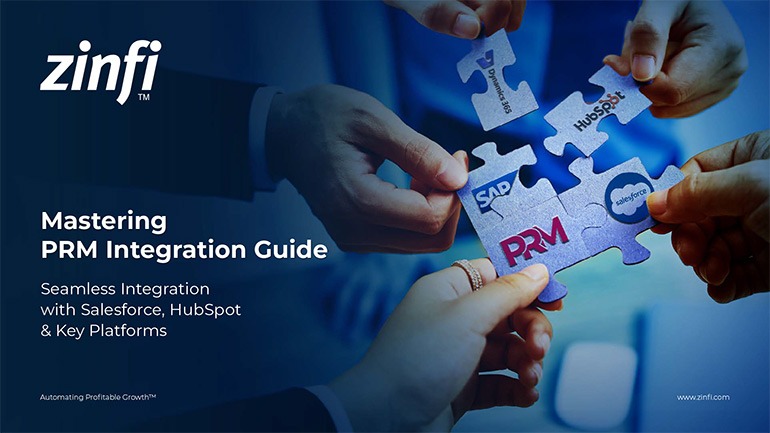Glossary - How to - Co-Marketing with Partners
How to Implement Co-Marketing with Partners?
Introduction
Co-marketing with partners is a strategic approach where two or more organizations collaborate on marketing campaigns to expand their reach, generate more leads, and improve customer engagement. In today’s competitive market, co-marketing enables companies to leverage shared resources, audiences, and expertise to drive growth and brand awareness.
In Partner Relationship Management (PRM), co-marketing is crucial in optimizing joint marketing efforts between vendors and partners. By integrating co-marketing strategies into an automated PRM system, organizations can streamline campaign execution, track performance, and enhance partner engagement efficiently.
Key Takeaways:
- Define Clear Objectives and Goals: Setting clear objectives for co-marketing campaigns ensures alignment between partners and maximizes impact. These goals may include lead generation, brand awareness, or customer acquisition. Organizations should establish measurable KPIs to track progress and success.
- Identify the Right Partners: Choosing the right partners is essential for successful co-marketing. Partners should share a target audience, complementary products, and a similar brand vision. Conducting a thorough partner evaluation based on audience demographics, industry relevance, and engagement metrics helps select the best-fit collaborators.
- Develop a Co-Marketing Plan: A detailed co-marketing plan outlines campaign objectives, target audience, messaging, content strategy, and resource allocation. This ensures both parties are aligned and understand their respective roles and responsibilities. Document the co-marketing agreement to clarify expectations.
- Leverage Digital Marketing Channels: Digital marketing is an effective way to maximize the reach of co-marketing campaigns. Email marketing, social media, webinars, and content marketing help engage audiences and drive conversions. Automation through a PRM platform can facilitate content distribution and performance tracking.
- Measure and Optimize Performance: Tracking the effectiveness of co-marketing campaigns is crucial to refining strategies and achieving better outcomes. Use analytics tools to monitor key performance indicators (KPIs) such as engagement rates, website traffic, lead conversions, and ROI. Continuous optimization based on data insights ensures sustained success.
Summary of Key Takeaways:
- Establish clear and measurable goals to align co-marketing efforts.
- Select partners with complementary products and a shared target audience.
- Develop a structured co-marketing strategy, outlining objectives and roles.
- Utilize digital marketing channels such as email, social media, and webinars.
- Track and optimize campaign performance using data analytics.
Key Examples:
- Automotive Manufacturing: Automobile manufacturers can collaborate with dealerships to promote new vehicle launches through joint advertising campaigns and co-branded events.
- Consumer Electronics: Tech brands often partner with software providers to co-market products, offering bundled solutions or co-branded promotional campaigns.
- Energy Production: Renewable energy firms can collaborate with environmental organizations to co-market sustainability initiatives and increase public awareness.
- Financial Services: Banks and fintech companies can implement co-marketing strategies by offering joint webinars and exclusive financial products for shared audiences.
- Food and Beverage: Food brands can partner with influencers or retailers for joint promotional campaigns, product giveaways, and recipe collaborations.
- Healthcare Services: Hospitals and health insurance providers can execute co-marketing campaigns to educate customers about preventive healthcare measures.
- Information Technology: IT service providers and cybersecurity firms can co-market bundled solutions, such as managed IT services and security software.
- Pharmaceutical Development: Pharmaceutical firms can partner with healthcare organizations to market new medical treatments through joint research reports and awareness campaigns.
- Retail Industry: Retailers can use e-commerce platforms to enhance online shopping experiences through joint discounts, promotions, and loyalty programs.
- Telecommunications: Telecom companies often co-market with mobile device manufacturers by offering exclusive data plans or bundles.
Conclusion:
Co-marketing with partners is a powerful strategy for businesses to expand their market reach, strengthen brand credibility, and drive revenue growth. By leveraging PRM automation, organizations can streamline co-marketing efforts, track campaign performance, and foster stronger partner relationships. Well-executed co-marketing ensures mutual benefits for all stakeholders, leading to increased customer engagement and business success.
Associated Keywords:
- Co-Marketing Strategy
- Partner Marketing Best Practices
- Joint Marketing Campaigns















